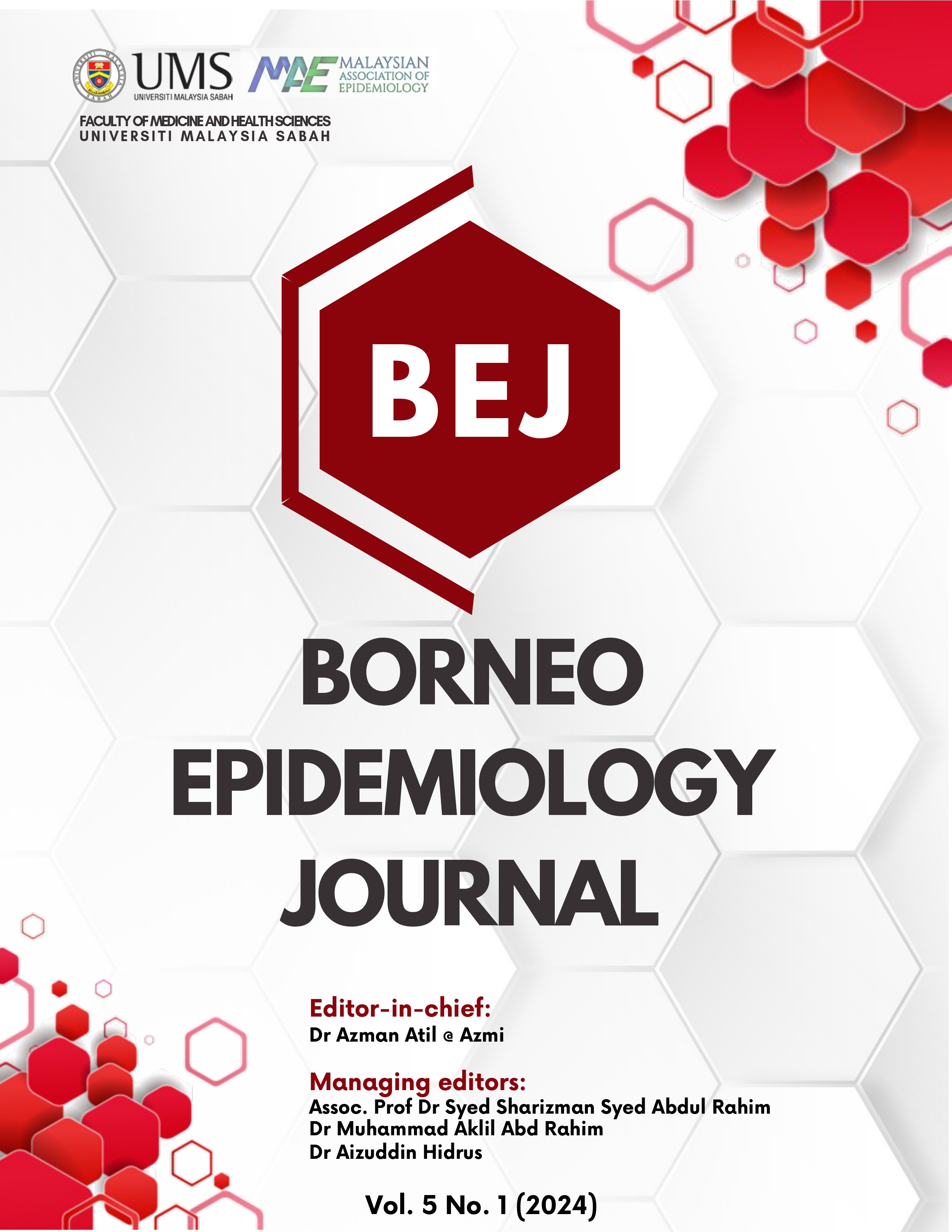Factors Related to Air Pollution and Impacts on Respiratory Health in Malaysia
DOI:
https://doi.org/10.51200/bej.v5i1.5312Keywords:
Air quality, air pollution, respiratory diseases, Malaysia, asthma, allergy, COPD, bronchitis, lung cancer.Abstract
ABSTRACT
Introduction: Air pollution is a major public health risk, especially for respiratory diseases. Urban and industrial areas in Malaysia often have high pollutant levels, increasing respiratory health issues. This scoping review assesses existing literature on factors related to air quality and respiratory diseases in Malaysia.
Objective: This review maps research on factors related to air pollution and respiratory diseases in Malaysia, noting regional air quality variations and identifying areas needing more research.
Methods: We systematically searched databases like ScienceDirect, Scopus, ProQuest, and Google Scholar for studies published from 2019 to 2024 on air quality trends and respiratory diseases in Malaysia. Data extracted included study design, location, pollutant types, weather parameters, respiratory outcomes, and main findings, synthesized using a descriptive-analytical method.
Results: Nineteen studies met the inclusion criteria. They found significant links between high levels of PM2.5, PM10, NO2, SO2, and O3 and increased asthma, bronchitis, and COPD. The Klang Valley, Johor Bahru, and Penang had poor air quality. Air pollution adversely affected respiratory health nationwide. There is a lack of research on rural and remote areas, especially in East Malaysia, and on long-term health impacts.
Conclusion: The review highlights the need for better air quality monitoring and stricter regulations in Malaysia to reduce health impacts. Future research should focus on underrepresented regions and long-term pollution effects, emphasizing comprehensive air quality management to protect public health.
Downloads
Published
Versions
- 2025-01-06 (2)
- 2025-01-06 (1)









